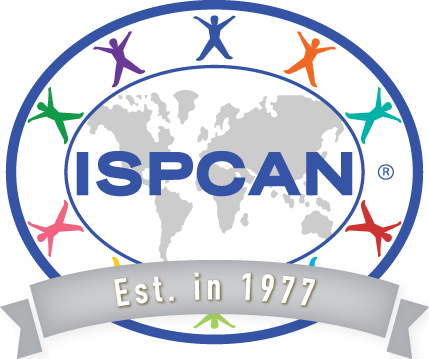Partner Resources
ISPCAN Resources
Menu
Youth Perspectives on Online Safety in Germany Findings from 2023 quantitative research among 12-16-year-olds in France – THORN Report in German
Thorn published youth-centered research that digs into the experiences of German youth (aged 12-16) with online sexual harms, including cold solicitations, online grooming, sexting, NCII, and the hurdles they face in disclosing their experiences. GERMAN Version
Region: Europe & Russia, Global
THORN
(Public Access)
Youth Perspectives on Online Safety in Germany Findings from 2023 quantitative research among 12-16-year-olds in France – THORN Report in English
Thorn published youth-centered research that digs into the experiences of German youth (aged 12-16) with online sexual harms, including cold solicitations, online grooming, sexting, NCII, and the hurdles they face in disclosing their experiences. ENGLISH Version
Region: Europe & Russia, Global
THORN
(Public Access)
Youth Perspectives on Online Safety in France Findings from 2023 quantitative research among 12-16-year-olds in France – THORN Report in French
Thorn published youth-centered research that digs into the experiences of French youth (aged 12-16) with online sexual harms, including cold solicitations, online grooming, sexting, NCII, and the hurdles they face in disclosing their experiences. FRENCH VERSION
Region: Europe & Russia, Global
THORN
(Public Access)
Youth Perspectives on Online Safety in France Findings from 2023 quantitative research among 12-16-year-olds in France – THORN Report in English
Thorn published youth-centered research that digs into the experiences of French youth (aged 12-16) with online sexual harms, including cold solicitations, online grooming, sexting, NCII, and the hurdles they face in disclosing their experiences.
Region: Europe & Russia, Global
THORN
(Public Access)
A global systematic scoping review of literature on the sexual exploitation of boys – EVIDENT Video
In this TL;DR video, we delve into the significant research article “A Global Systematic Scoping Review of Literature on the Sexual Exploitation of Boys,” published in the Journal of Child Abuse and Neglect. Our aim is to distill the essential findings of this comprehensive review, highlighting its impact on understanding and addressing the sexual exploitation of boy victims, a group often overlooked in research and clinical attention.
Region: Global
EVIDENT
(Public Access)
Enhancing a survivor-centred approach to healthcare provision in Afghanistan – EVIDENT Video
This TL;DR video presents an overview of the critical research, “Enhancing a Survivor-Centred Approach to Healthcare Provision in Afghanistan,” from the Journal of Child Abuse and Neglect. The study focuses on the unique challenges male victims/survivors of sexual violence face in accessing healthcare services in Afghanistan, a context deeply affected by conflict.
Region: Middle East, Global
EVIDENT
(Public Access)
Frontline support services for boys who have experienced child sexual exploitation – EVIDENT Video
This video offers a detailed summary of the study “Frontline Support Services for Boys Who Have Experienced Child Sexual Exploitation,” featured in the Journal of Child Abuse and Neglect. The research provides insights into the challenges reported by 404 Frontline Support Workers in seven countries, focusing on their experiences in providing services to boys who have been victims of child sexual exploitation and abuse (CSEA).
Region: Global
EVIDENT
(Public Access)
Barriers for boys in accessing social supports for victimization – EVIDENT Video
In this TL;DR video, we explore the findings of the research “Sexual Exploitation of Children: Barriers for Boys in Accessing Social Supports for Victimization,” published in the Journal of Child Abuse and Neglect. This discussion paper, based partly on ECPAT International’s Global Boys Initiative, sheds light on the unique challenges faced by boys and gender-diverse children who are victims of sexual exploitation.
Region: Global
EVIDENT
(Public Access)
“She was willing to send me there” Intrafamilial abuse, exploitation and trafficking of boys – EVIDENT Video
This TLDR video examines the study “‘She was willing to send me there’: Intrafamilial Child Sexual Abuse, Exploitation, and Trafficking of Boys,” featured in the Journal of Child Abuse and Neglect. The research delves into the deeply complex and often concealed world of intrafamilial child sexual exploitation and abuse (CSEA), focusing on the experiences of male victims and survivors.
Region: Global
EVIDENT
(Public Access)
Which groups are most affected by sexual violence? An analysis of adolescents in South Africa – EVIDENT Video
This TLDR video analyzes the study “Which Groups are Most Affected by Sexual Violence? A Disaggregated Analysis by Sex, Age, and HIV-status of Adolescents Living in South Africa,” from the Journal of Child Abuse and Neglect. The research provides a comprehensive look at the prevalence of sexual violence (SV) among adolescents in South Africa, dissecting the impacts based on sex, age, and HIV status.
Region: Africa, Global
EVIDENT
(Public Access)
The Tender Casualties of Conflict: Why Peace Is Imperative For Our Children’s Future – My Body is My Body Program
This article focuses on the devastating impact of war on children and the critical need for peace for the future well-being of young generations.
Region: Global
My Body is My Body Program
(Public Access)
NEON Program – Safe Without Violence Primary Prevention Program – ISA Institute of Slovenia
Primary prevention – investment for safety, health and well-being of children, adolescents, adolescents and adults
The experience of violence and sexual abuse is also a reality in Slovenia for some children, adolescents and adolescents.
The consequences of violence and abuse have a negative impact on children’s physical and psychological well-being, physical and mental health. These consequences can very roughly “interfere” with their personal development, interpersonal relationships, opportunities for schooling, creation, carefree play.
Primary prevention is one of the key factors for protecting children, adolescents and adolescents from various forms of violence and abuse.
Preventive activities strengthen the protective factors of children, adolescents and adolescents. It is important to start already in the preschool period and ensure repetitions, upgrading knowledge and skills.
